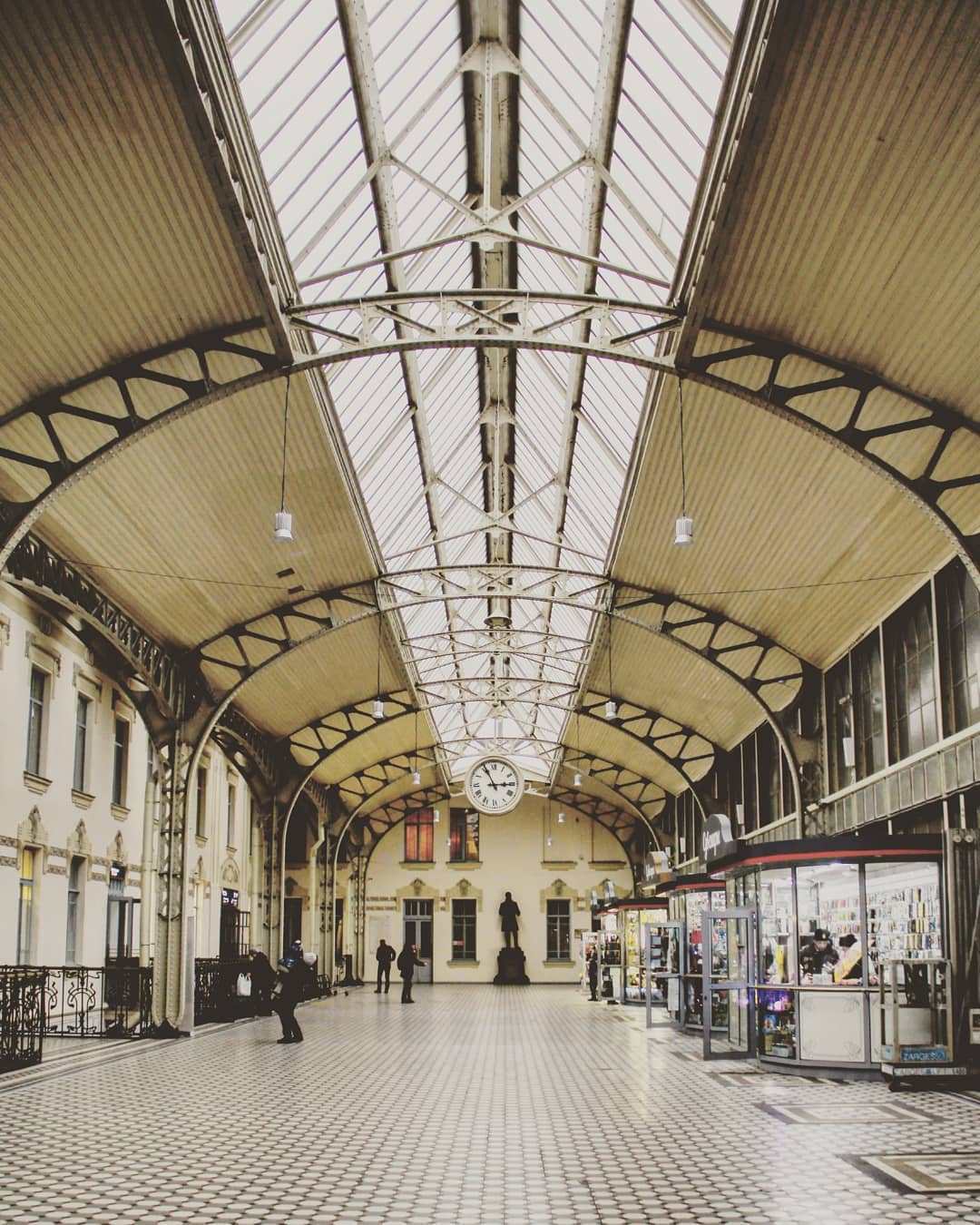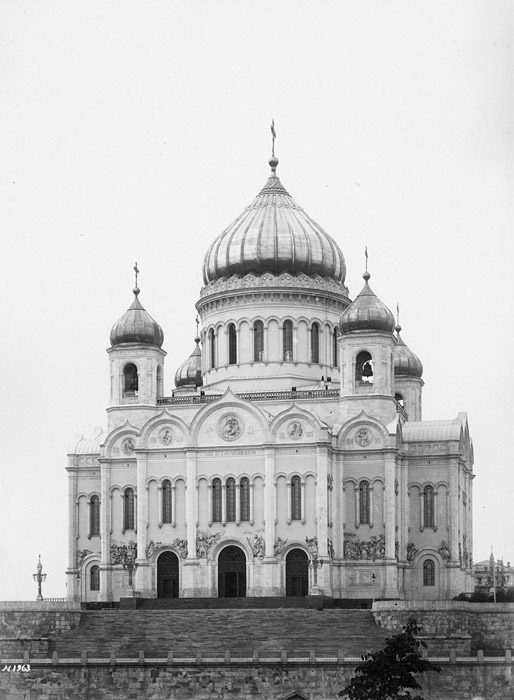|
Vitebsky Railway Station
St Petersburg-Vitebsky (russian: Ви́тебский вокза́л) is a railway station terminal in Saint Petersburg, Russia. Formerly known as ''St Petersburg-Tsarskoselsky'' station because its first line led to the suburban royal residences town of Tsarskoye Selo, it was the first railway station to be built in Saint Petersburg and the whole of the Russian Empire (while its present-day building is much newer). Later, with considerable extension of its lines, the station was renamed after a much farther destination - Vitebsk, a city in Belarus. Early history The station, located at the crossing of the Zagorodny Avenue and the now-vanished Vvedensky Canal, was inaugurated in the presence of Nicholas I of Russia on 30 October 1837 when the first Russian train, named ''Provorny'', departed from its platform for the imperial residence at Tsarskoe Selo. A replica of this train may be seen as a permanent exhibit at the modern station. The first building of the Petersburg Stat ... [...More Info...] [...Related Items...] OR: [Wikipedia] [Google] [Baidu] |
Bahn Aus Zusatzzeichen 1024-15 , British archaeologist
Bahn may refer to: *Banie, formerly named Bahn, a Polish village *Deutsche Bahn, the national German railway company *Paul Bahn Paul G. Bahn, (born 29 July 1953)'Bahn, Paul (1953-)' ''Encyclopedia.com''. ... See also * Banie (other) {{Disambiguation ...[...More Info...] [...Related Items...] OR: [Wikipedia] [Google] [Baidu] |
Konstantin Thon
Konstantin Andreyevich Thon, also spelled Ton (russian: Константи́н Андре́евич Тон; October 26, 1794 – January 25, 1881) was an official architect of Imperial Russia during the reign of Nicholas I. His major works include the Cathedral of Christ the Saviour, the Grand Kremlin Palace and the Kremlin Armoury in Moscow. Early life Konstantin, born in St. Petersburg to the family of a German jeweller, was one of three Thon brothers who all rose to become notable architects. He studied at the Imperial Academy of Arts (1803–15) under the Empire Style architect Andrey Voronikhin, best remembered for his work on the Kazan Cathedral, situated right in the middle of the Nevsky Prospekt. He studied Italian art in Rome from 1819 to 1828, and on his return home was admitted to the academy as its member (1830) and professor (1833). In 1854, he was appointed rector of the architectural division of the academy. Thon first attracted public attention with his su ... [...More Info...] [...Related Items...] OR: [Wikipedia] [Google] [Baidu] |
Saint Petersburg Metro
The Saint Petersburg Metro (russian: links=no, Петербургский метрополитен, Peterburgskiy metropoliten) is a rapid transit system in Saint Petersburg, Russia. Construction began in early 1941, but was put on hold due to World War II and the subsequent Siege of Leningrad, during which the constructed stations were used as bomb shelters. It was finally opened on 15 November 1955. Formerly known as the ''Order of Lenin Leningrad Metro named after V. I. Lenin'' (), the system exhibits many typical Soviet designs and features exquisite decorations and artwork making it one of the most attractive and elegant metros in the world. Due to the city's unique geology, the Saint Petersburg Metro is also one of the deepest metro systems in the world and the deepest by the average depth of all the stations. The system's deepest station, Admiralteyskaya, is below ground. The network consists of 5 lines with a total length of . It has 72 stations including 7 transfer ... [...More Info...] [...Related Items...] OR: [Wikipedia] [Google] [Baidu] |
Pavlovsk, Saint Petersburg
Pavlovsk (russian: Па́вловск "he townof Pavel" after Emperor Pavel (Paul) of Russia) is a municipal town in Pushkinsky District in the suburban part of the federal city of St. Petersburg, Russia, located south from St. Petersburg proper and about southeast from Pushkin. Population: Known since the late 18th century, when Saint Petersburg was the capital of Russian Empire, as a countryside residence of Russian royal family commissioned creation of the town's landmark -palace with a large park, now parts of its federal museum reserve. The town developed around the Pavlovsk Palace, a major residence of the Russian imperial family. Between 1918 and 1944, its official name was Slutsk, after the revolutionary Vera Slutskaya, and then was changed back to Pavlovsk. Pavlovsk is part of the UNESCO World Heritage Site "Historic Centre of Saint Petersburg and Related Groups of Monuments". History Fortress A wooden fortress was built by Russians on the place of P ... [...More Info...] [...Related Items...] OR: [Wikipedia] [Google] [Baidu] |
Pushkin (town)
Pushkin (russian: Пу́шкин) is a municipal town in Pushkinsky District of the federal city of St. Petersburg, Russia, located south from the center of St. Petersburg proper, and its railway station, Tsarskoye Selo, is directly connected by railway to the Vitebsky Rail Terminal of the city. Population: Pushkin was founded in 1710 as an imperial residence named Tsarskoye Selo (russian: Ца́рское Село́, "Tsar's Village") and received status of a town in 1808. The first public railways in Russia, Tsarskoye Selo Railways, were opened here in 1837 and connected the town to the capital, St. Petersburg. After the October Revolution, the town was renamed to Detskoye Selo (russian: Де́тское Село́, "Children's Village"). Its name was further changed in 1937 to Pushkin to commemorate the 100th anniversary of the death of the Russian poet Alexander Pushkin. The town contains an ensemble of the 18th century "Tsarskoye Selo". This museum complex ... [...More Info...] [...Related Items...] OR: [Wikipedia] [Google] [Baidu] |
Belarus
Belarus,, , ; alternatively and formerly known as Byelorussia (from Russian ). officially the Republic of Belarus,; rus, Республика Беларусь, Respublika Belarus. is a landlocked country in Eastern Europe. It is bordered by Russia to the east and northeast, Ukraine to the south, Poland to the west, and Lithuania and Latvia to the northwest. Covering an area of and with a population of 9.4 million, Belarus is the 13th-largest and the 20th-most populous country in Europe. The country has a hemiboreal climate and is administratively divided into seven regions. Minsk is the capital and largest city. Until the 20th century, different states at various times controlled the lands of modern-day Belarus, including Kievan Rus', the Principality of Polotsk, the Grand Duchy of Lithuania, the Polish–Lithuanian Commonwealth, and the Russian Empire. In the aftermath of the Russian Revolution in 1917, different states arose competing for legitimacy amid the ... [...More Info...] [...Related Items...] OR: [Wikipedia] [Google] [Baidu] |
Ukraine
Ukraine ( uk, Україна, Ukraïna, ) is a country in Eastern Europe. It is the second-largest European country after Russia, which it borders to the east and northeast. Ukraine covers approximately . Prior to the ongoing Russian invasion, it was the eighth-most populous country in Europe, with a population of around 41 million people. It is also bordered by Belarus to the north; by Poland, Slovakia, and Hungary to the west; and by Romania and Moldova to the southwest; with a coastline along the Black Sea and the Sea of Azov to the south and southeast. Kyiv is the nation's capital and largest city. Ukraine's state language is Ukrainian; Russian is also widely spoken, especially in the east and south. During the Middle Ages, Ukraine was the site of early Slavic expansion and the area later became a key centre of East Slavic culture under the state of Kievan Rus', which emerged in the 9th century. The state eventually disintegrated into rival regional po ... [...More Info...] [...Related Items...] OR: [Wikipedia] [Google] [Baidu] |
Baltic States
The Baltic states, et, Balti riigid or the Baltic countries is a geopolitical term, which currently is used to group three countries: Estonia, Latvia, and Lithuania. All three countries are members of NATO, the European Union, the Eurozone, and the OECD. The three sovereign states on the eastern coast of the Baltic Sea are sometimes referred to as the "Baltic nations", less often and in historical circumstances also as the "Baltic republics", the "Baltic lands", or simply the Baltics. All three Baltic countries are classified as high-income economies by the World Bank and maintain a very high Human Development Index. The three governments engage in intergovernmental and parliamentary cooperation. There is also frequent cooperation in foreign and security policy, defence, energy, and transportation. The term "Baltic states" ("countries", "nations", or similar) cannot be used unambiguously in the context of cultural areas, national identity, or language. While the majorit ... [...More Info...] [...Related Items...] OR: [Wikipedia] [Google] [Baidu] |
Central Europe
Central Europe is an area of Europe between Western Europe and Eastern Europe, based on a common historical, social and cultural identity. The Thirty Years' War (1618–1648) between Catholicism and Protestantism significantly shaped the area's history. The concept of "Central Europe" appeared in the 19th century. Central Europe comprised most of the territories of the Holy Roman Empire and those of the two neighboring kingdoms of Poland and Hungary. Hungary and parts of Poland were later part of the Habsburg monarchy, which also significantly shaped the history of Central Europe. Unlike their Western European (Portugal, Spain et al.) and Eastern European (Russia) counterparts, the Central European nations never had any notable colonies (either overseas or adjacent) due to their inland location and other factors. It has often been argued that one of the contributing causes of both World War I and World War II was Germany's lack of original overseas colonies. After Wor ... [...More Info...] [...Related Items...] OR: [Wikipedia] [Google] [Baidu] |
Sherlock Holmes
Sherlock Holmes () is a fictional detective created by British author Arthur Conan Doyle. Referring to himself as a " consulting detective" in the stories, Holmes is known for his proficiency with observation, deduction, forensic science and logical reasoning that borders on the fantastic, which he employs when investigating cases for a wide variety of clients, including Scotland Yard. First appearing in print in 1887's '' A Study in Scarlet'', the character's popularity became widespread with the first series of short stories in '' The Strand Magazine'', beginning with " A Scandal in Bohemia" in 1891; additional tales appeared from then until 1927, eventually totalling four novels and 56 short stories. All but one are set in the Victorian or Edwardian eras, between about 1880 and 1914. Most are narrated by the character of Holmes's friend and biographer Dr. John H. Watson, who usually accompanies Holmes during his investigations and often shares quarters with him at the ... [...More Info...] [...Related Items...] OR: [Wikipedia] [Google] [Baidu] |
Anna Karenina
''Anna Karenina'' ( rus, «Анна Каренина», p=ˈanːə kɐˈrʲenʲɪnə) is a novel by the Russian author Leo Tolstoy, first published in book form in 1878. Widely considered to be one of the greatest works of literature ever written, Tolstoy himself called it his first true novel. It was initially released in serial installments from 1875 to 1877, all but the last part appearing in the periodical '' The Russian Messenger.'' A complex novel in eight parts, with more than a dozen major characters, ''Anna Karenina'' is often published in more than 800 pages. It deals with themes of betrayal, faith, family, marriage, Imperial Russian society, desire, and rural vs. city life. The story centers on an extramarital affair between Anna and dashing cavalry officer Count Alexei Kirillovich Vronsky that scandalizes the social circles of Saint Petersburg and forces the young lovers to flee to Italy in a search for happiness, but after they return to Russia, their lives furth ... [...More Info...] [...Related Items...] OR: [Wikipedia] [Google] [Baidu] |
Vitebsky Rail Terminal Vestibule 1
Vitebsky may refer to: * Vitebsky Rail Terminal, a terminus in Saint Petersburg, Russia *Vitebsky Central Sport Complex Vitebsky Central Sport Complex (also known as Vitebsky CSK in short) is a multi-use sports complex in Vitebsk, Belarus. It is currently used mostly for football matches and is the home ground of FC Vitebsk. The stadium holds 8,144 people. Histor ..., a sports venue in Vitebsk, Belarus People with the surname * Piers Vitebsky, British anthropologist {{disambiguation, surname ... [...More Info...] [...Related Items...] OR: [Wikipedia] [Google] [Baidu] |






